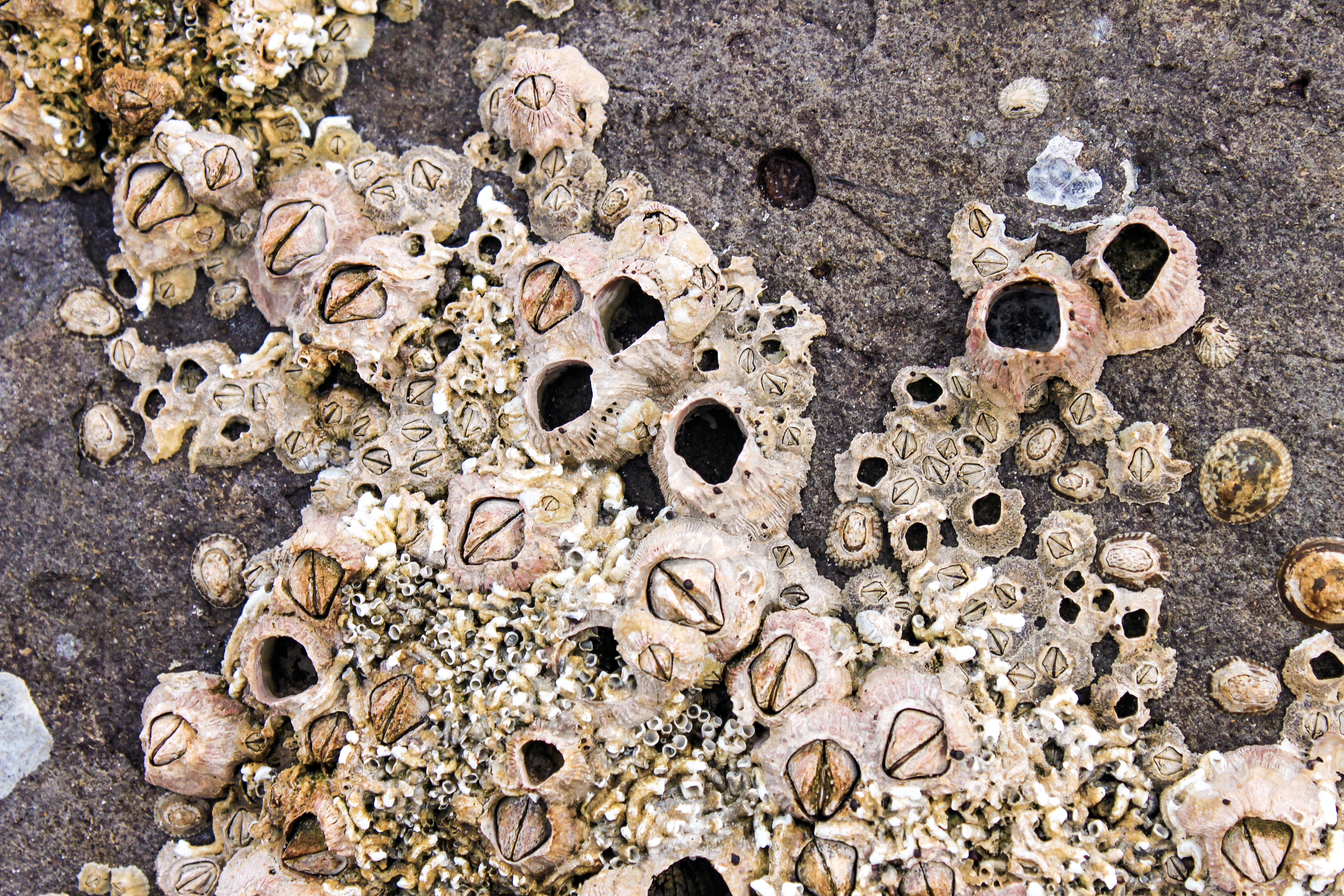A truly global challenge

Barnacles like these (pictured) play an important role in biofouling. Image courtesy of Shutterstock.
-By Nicholas Demille, KAUST News
Amphibalanus improvisus was first described by Charles Darwin in 1854 in one of many monographs commissioned by the Ray Society of London. Darwin's mission was scientific, but many of the readers of the monograph were fueled by more pragmatic concerns. They were the owners and operators of commercial marine vessels—an essential part of the global supply chain of the 19th century.
A. improvisus adheres itself to ships with the biological equivalent of concrete. It is described by the World Register of Marine Species as "fast growing and gregarious" and is capable of reproducing both sexually and asexually. Known commonly as the "bay barnacle," it tolerates "wide fluctuations of salinity and temperature," and causes damage to "ships and aquaculture infrastructure...technical problems and loss of efficiency," the World Register noted. A. improvisus is a seriously tough organism.
Coming unstuck
Boats slice through the water with varying efficiency due in part to an array of organisms that stick to the boats and die in the millions, increasing the energy required to maintain speed. Ship builders have always struggled to keep their hulls free from drag due to the bay barnacle and other organisms. The field of study dedicated to addressing this challenge is biofouling.
Biofouling affects much more than seafaring vessels. It occurs wherever water is present—medical devices, paper, food, underwater structures and more. It's the hidden challenge that must be overcome before a range of modern luxuries are possible.
When ocean water is cleaned using a membrane, such as during desalination, the amount of energy required to push the fluid through the membrane is directly impacted by the degree to which biofouling is present. In countries where desalination is essential, the economic and ecological cost of desalination is of paramount concern. At KAUST, for example, the work of an entire research center is dedicated to beating back the barnacles of the desalination world.
"Saudi Arabia is the largest producer of desalinated water globally. That comes at an incredible energy cost. Converting saline-rich sea waters into fresh drinking water is a major undertaking. In order to reduce the energy footprint of the desalination process, we...look at novel desalination technologies and seek to reduce that energy consumption," Associate Director of the KAUST Water Desalination and Reuse Research Center (WDRC) Professor Matthew McCabe said.
McCabe and his colleagues at the WDRC have anti-fouling materials at their disposal and methods for discouraging the buildup of biofouling species on membranes, but they still have a significant challenge on their hands.
"One of the approaches that [WDRC Director] Johannes Vrouwenvelder is looking at is not only the biological treatment, the anti-fouling agents that you would introduce into the system to exclude that development, but also being able to observe in situ the level of fouling—to be able to monitor the desalination process and the level of fouling that is going to affect your production of fresh waters," McCabe said.
KAUST Associate Professor Pascal Saikaly and colleagues from the WDRC are also working in this area using graphene and a novel membrane configuration to create self-cleaning desalination systems. The team has also found a way to harvest energy from the microbial decomposition that is a byproduct of desalination.
Where food, water, energy and environment come together
Losses of efficiency have direct impacts on energy use, food production and more, but it's not all bad news when it comes to fouling. KAUST Associate Professor Peiying Hong and a KAUST doctoral student determined that at certain levels, biofouling helps membranes filter out bacteria more effectively.
McCabe is quick to link concerns about water security to energy and food in what researchers and policy wonks variously refer to as the water-food-energy or food-water-energy nexus. McCabe and his team look at the production of food in the Gulf region through the lens of water and energy inputs per unit harvested.
To grow food in the Gulf region, you have to desalinate water and adopt techniques that maximize the efficiency of water and energy use, as both come at a steep cost economically and environmentally. McCabe hopes to change that.
"I spend a lot of time and effort trying to quantify the water used in agriculture so that we can better manage the water resources that we have available," McCabe said.
He puts the amount of water that is dedicated to agriculture in Saudi Arabia at around 85 percent.
Of national and international relevance
"This is a global problem—around two thirds of all freshwater goes to some form of agriculture," said McCabe.
WDRC colleague and KAUST Professor TorOve Leiknes is also interested in the link between food production and water resources. Leiknes' research looks at advanced water treatment in recycling aquaculture systems.
"Agriculture puts the biggest demand on freshwater sources, so my interest is in the overlap of water and food and to ask if we can reclaim water in an urban environment for urban agriculture," Leiknes said during a panel discussion on the KAUST campus.
"We talk about water security, and it is one of the major challenges facing us in the 21st century...[I]t's absolutely a key element of research being undertaken in the center, and it obviously has national and international relevance," McCabe said.

